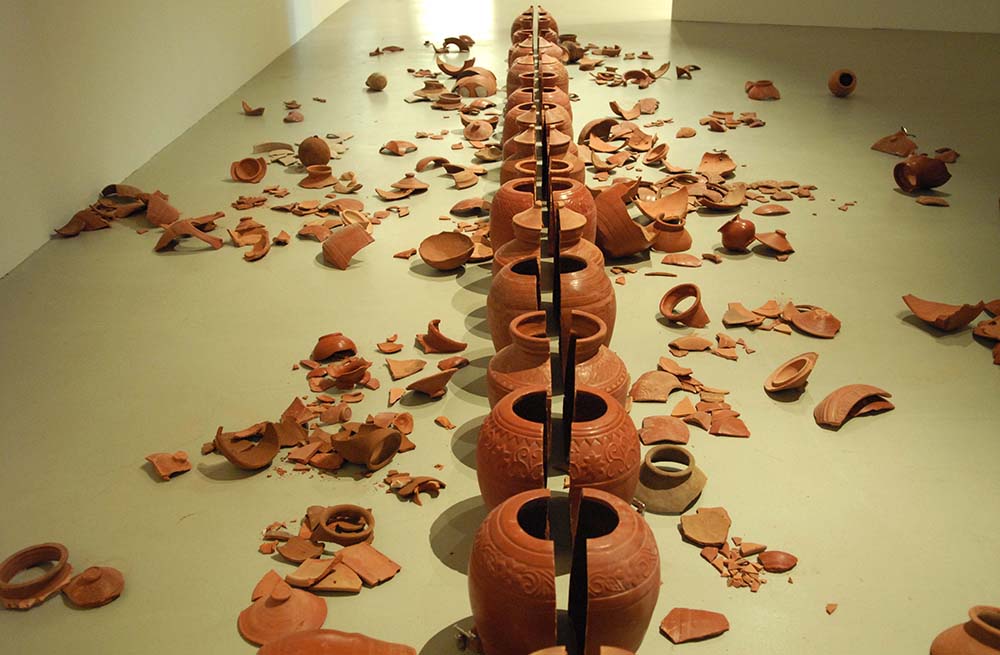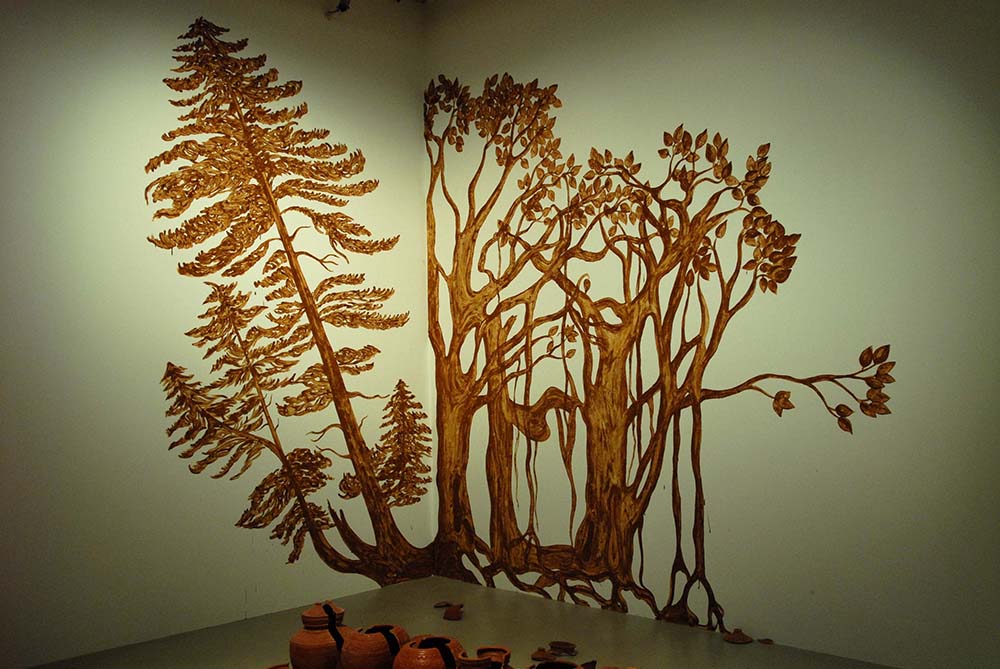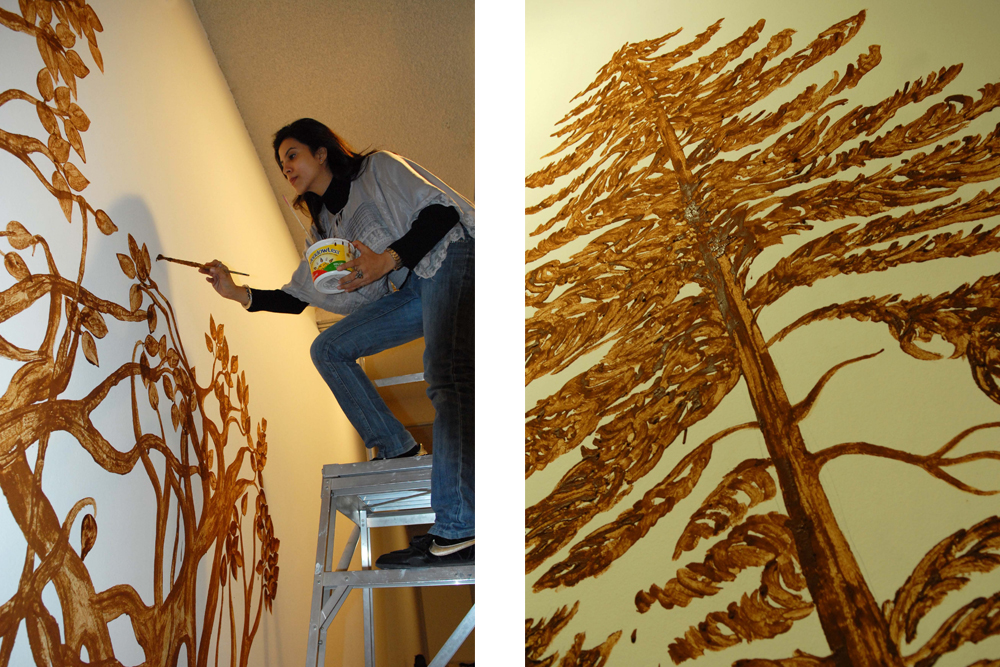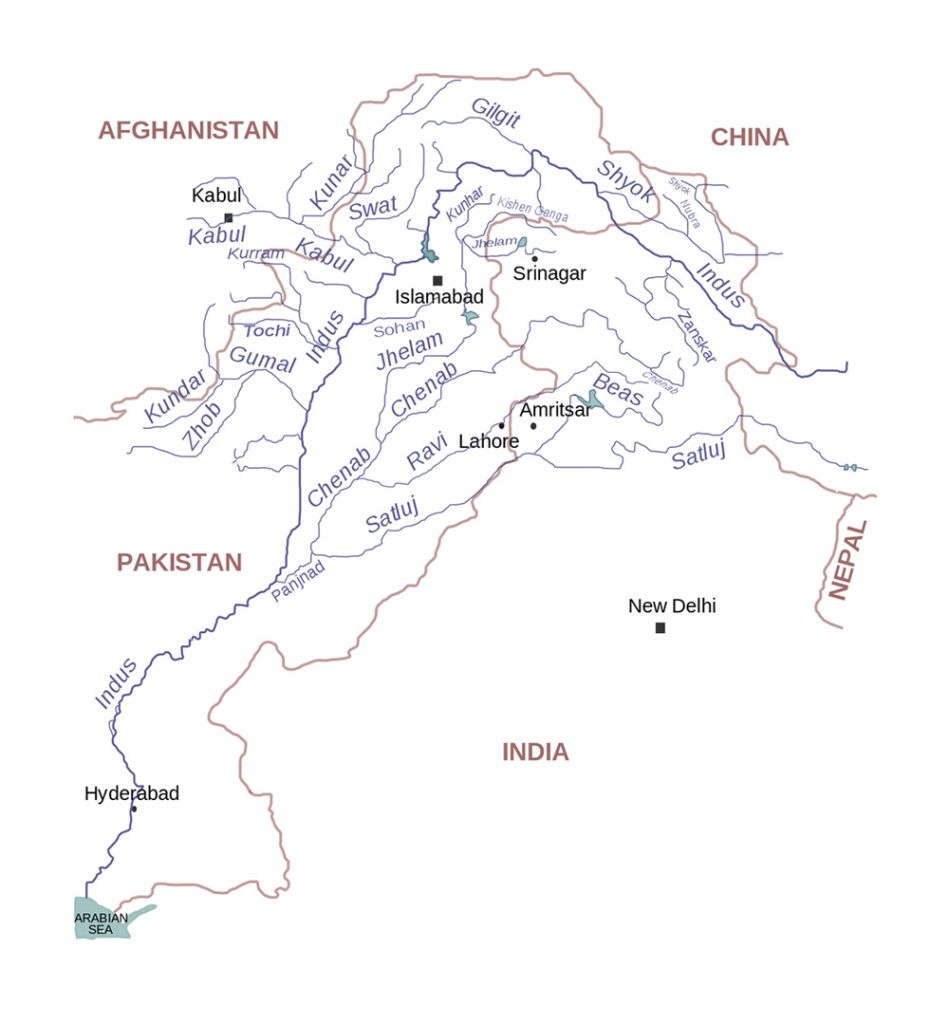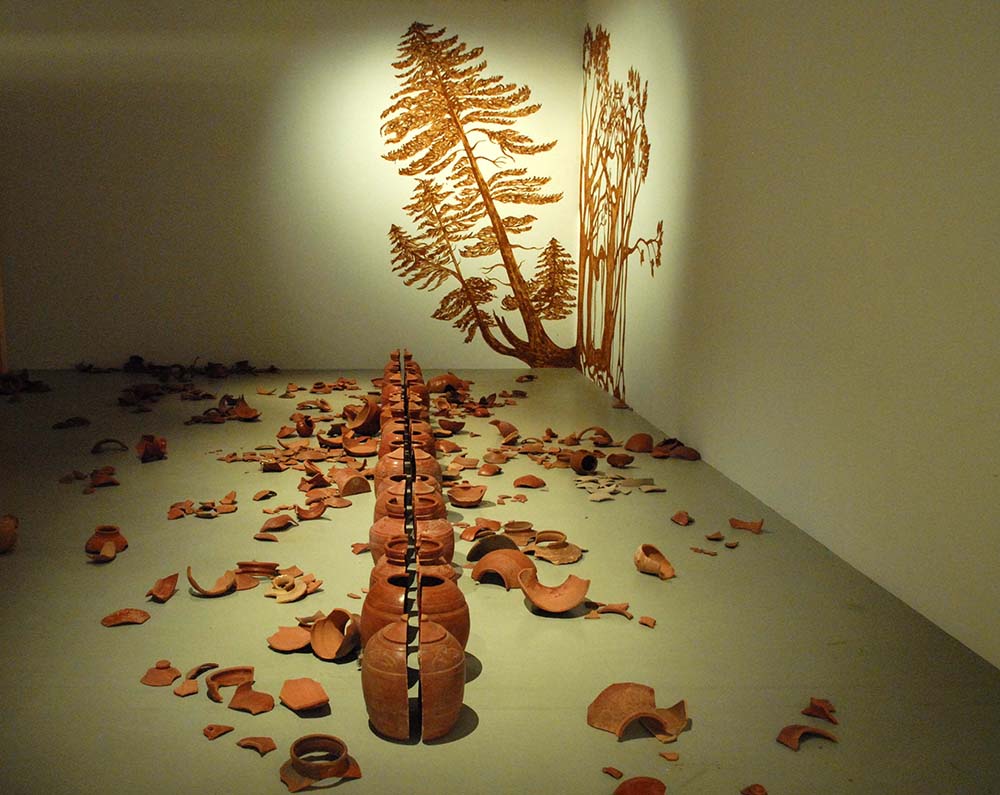
2 Degrees
2010
terracotta urns, henna, 9 min single channel audio loop
dimensions variable
This work was part of the River Project at the Campbelltown Arts Centre in Sydney that brought together artists from Australia, China, Korea, the Philippines, Vietnam and Papua New Guinea having a special interest in imagining the river as it crosses borders and changes course between different nation states. Two degrees, most reputable scientists agree, is the maximum rise in temperature that we can allow, after which the climate change associated with global warming becomes potentially catastrophic. Another association, also measured in degrees, social theorists estimate is that every person on the planet is six degrees or six relational steps away from every other person. But for those who share a common civilization history, could the degrees of separation be as narrow or as wide as the river that flows between them?
Rivers have always played an important role in human history. They’ve been the cradle of civilizations, the link between cultures, the boundaries of empires and so it has been with the Indus. It is a river that gave its name to a sub-continent. Kashmir is the origin point for many rivers and tributaries of the Indus River basin feeding Pakistan and India. Under the 1960’s International water sharing treaty, Pakistan has the use of the three western rivers – the Indus, Jhelum and Chenab – and India, the three eastern ones – the Sutlej, Beas and Ravi. The split gave India control of the part of Kashmir that is the source of six rivers that irrigate crops in Pakistan’s agricultural heartland of Punjab province and elsewhere. While the water dispute can be traced back to the time when the British Indian Empire was partitioned, there is continued distrust over the fair partitioning of the waters.
The wall drawing made using henna, comprises a tree that bifurcates into two halves. Stemming from common roots one half grows into the Banyan tree, the national tree of India while the other shoots off into the Deodar tree, the national tree of Pakistan on the adjoining wall. The audio played from within the urns carried sounds of the flowing river collected at various different points where it changes name. While the river may have multiple names as it moves through different regions, the water essentially remains the same.
